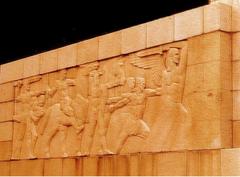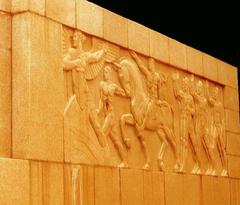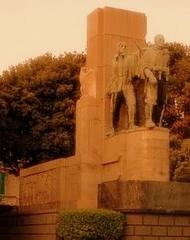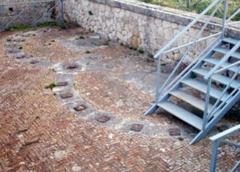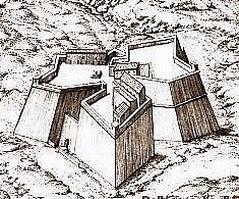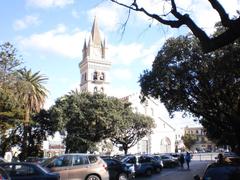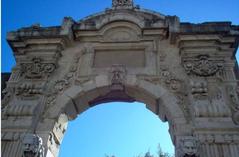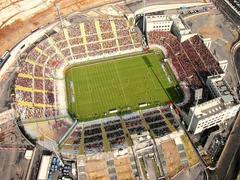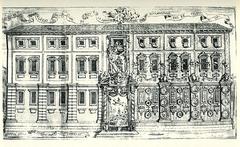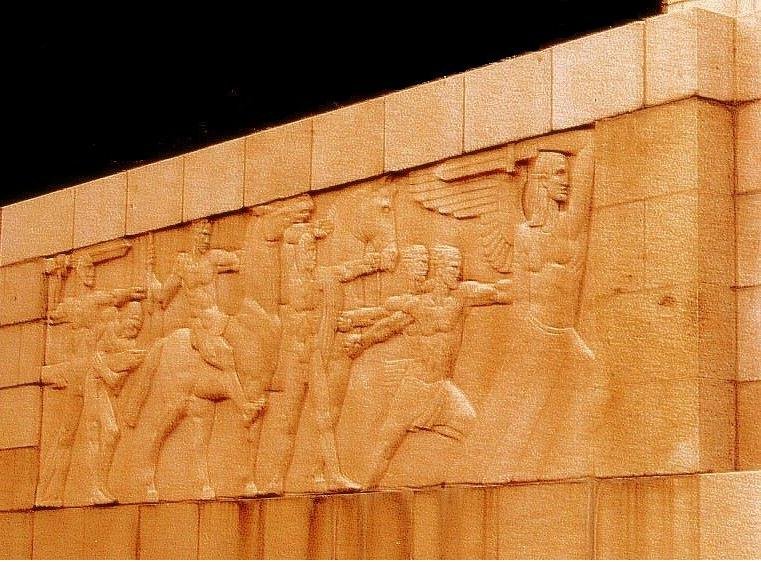
Messina Monumento Ai Caduti Della Prima Guerra Mondiale: Complete Visiting Guide
Date: 14/06/2025
Introduction
The Monumento Ai Caduti Della Prima Guerra Mondiale in Messina stands as a profound symbol of sacrifice, resilience, and civic memory. Located in the heart of Messina, Sicily, this monument honors the city’s soldiers who perished during World War I. Beyond its commemorative purpose, it represents a blend of artistic heritage, historical context, and civic pride. This comprehensive guide covers everything you need to know for your visit, including hours, tickets, accessibility, historical background, nearby attractions, travel tips, FAQs, and recommended resources.
Historical and Cultural Significance
Origins and Historical Context
After World War I, communities across Italy sought to immortalize the sacrifices of their citizens. Messina, deeply affected by both the war and the catastrophic 1908 earthquake, erected the Monumento Ai Caduti as a focal point for collective mourning and national identity. The monument’s conception was tied to the broader Italian movement of erecting war memorials in the 1920s and 1930s, reflecting not only grief but also the hope for renewal and unity (Pietre di Memoria).
The site chosen—the remains of the medieval Matagrifone castle—links the city’s ancient defense history to its modern narrative of sacrifice. The integration of the old fortress’s polygonal tower into the new memorial underscores the enduring spirit of Messina and its people (Enjoy Sicilia).
Architectural and Artistic Features
The monument is a striking example of Baroque-inspired architecture, featuring:
- An irregular octagonal plan and an imposing dome, crowned by a lantern with a sphere and cross—symbols of faith and national unity.
- Eight bronze statues at the dome’s base, designed by Theophilus Raggio, representing Religion, the theological virtues (Faith, Hope, Charity), and the cardinal virtues (Prudence, Justice, Fortitude, Temperance).
- A monumental bell—one of Italy’s largest—cast from the bronze of enemy cannons, symbolizing transformation from war to peace.
- A marble sarcophagus inside the shrine, with a sculpted fallen soldier by Bonfiglio, surrounded by thousands of niches honoring the dead from both World Wars.
The monument’s iconography avoids glorifying war itself, instead focusing on universal themes of sacrifice, redemption, and resilience (Catalogo Beni Culturali).
Civic and Social Role
Inaugurated during the Fascist era, the monument was intended as both a tribute and a tool of state propaganda. Over time, it has become a central site for communal remembrance, hosting annual ceremonies such as National Unity and Armed Forces Day (November 4th) and Liberation Day (April 25th). Its role has evolved to reflect the city’s ongoing dialogue with its past, including the addition of plaques for World War II victims.
Practical Visitor Information
Location and Getting There
The monument is located in a prominent public square, often identified as Piazza Municipio or near the Sacrario di Cristo Re, within Messina’s city center. It is easily accessible:
- By foot: From Messina Centrale train station (about 15 minutes).
- By public transport: Local buses and taxis serve the area.
- By car: Limited parking near the site; public transport is recommended.
Visiting Hours
- Outdoor monument: Accessible year-round, 24/7. Daylight hours (8:00 AM–7:00 PM) are recommended for optimal visibility and safety.
- Sacrario di Cristo Re (adjacent memorial church): Typically open from 9:00 AM–6:00 PM, with extended hours on special commemorative days. Always check local sources for current schedules.
Tickets and Admission
- Monument: Free access; no tickets required.
- Special events or guided tours: May carry a fee—check with local tourism offices or tour operators.
Accessibility
- Wheelchair and stroller accessible: Paved paths and ramps are available, though some areas may be uneven or involve stairs due to the site’s hilltop location. Contact the site ahead for specific assistance.
Visitor Experience and Etiquette
- Photography: Permitted; please be respectful during ceremonies.
- Dress code: No formal requirement, but modest attire is advised during commemorative events or when visiting the Sacrario di Cristo Re.
- Facilities: No dedicated restrooms on site; nearby cafes or public buildings offer facilities.
- Language: Italian is primary, but basic English is often understood at tourism hotspots.
Nearby Attractions
Enhance your visit with these close-by destinations:
- Sacrario di Cristo Re: Neo-baroque memorial church with panoramic city views and the monumental bell (Spotting History).
- Messina Cathedral (Duomo di Messina): Famous for its astronomical clock.
- Fontana di Orione: Renaissance fountain in Piazza Duomo.
- Palazzo Zanca: Messina’s city hall.
- Museo Regionale di Messina: Art and archaeological collections.
Special Events and Guided Tours
- Commemorative ceremonies: Held annually on November 4th and April 25th, featuring wreath-laying, speeches, and public participation.
- Guided tours: Offered by local operators, especially during holidays. Check with Free Tour Expert and local tourism offices for schedules.
Practical Travel Tips
- Best times to visit: Early morning or late afternoon for ideal lighting and fewer crowds.
- Weather: Mediterranean climate—summers are hot and dry, winters mild and wetter. Bring sun protection in summer and rain gear in winter (Champion Traveler, Weather2Travel).
- Footwear: Wear comfortable shoes for hilly or uneven terrain.
- Itinerary suggestion: Combine your visit to the monument with the Sacrario di Cristo Re and Messina Cathedral for a full historical experience.
Frequently Asked Questions (FAQ)
Q: Are there entrance fees or tickets required?
A: No, the monument is a public site and free to visit.
Q: What are the best visiting hours?
A: Accessible 24/7, but daylight hours are best for safety and photography.
Q: Is the site accessible to people with disabilities?
A: Yes, generally accessible with paved paths and ramps; some areas may be less accessible due to steps.
Q: Are there guided tours?
A: Yes, especially during special events and holidays.
Q: What nearby sites should I visit?
A: Sacrario di Cristo Re, Messina Cathedral, Fontana di Orione, and the Museo Regionale di Messina.
Resources and Further Reading
- Enjoy Sicilia
- Pietre di Memoria
- Free Tour Expert
- Catalogo Beni Culturali
- Spotting History
- Champion Traveler
- Weather2Travel
- Wanderlog
Summary and Call to Action
The Monumento Ai Caduti Della Prima Guerra Mondiale in Messina is a must-visit landmark that encapsulates history, art, and collective memory. Its evocative sculptures, powerful symbolism, and central role in civic life make it a focal point for reflection and learning. Whether you are a history enthusiast, a cultural traveler, or simply exploring Messina, this site offers a meaningful connection to Italy’s past and present.
Plan your visit today! For the latest updates, guided tour options, and special event schedules, download the Audiala app. Stay connected with local tourism resources and our social media channels for news and inspiration on Messina’s rich heritage.
